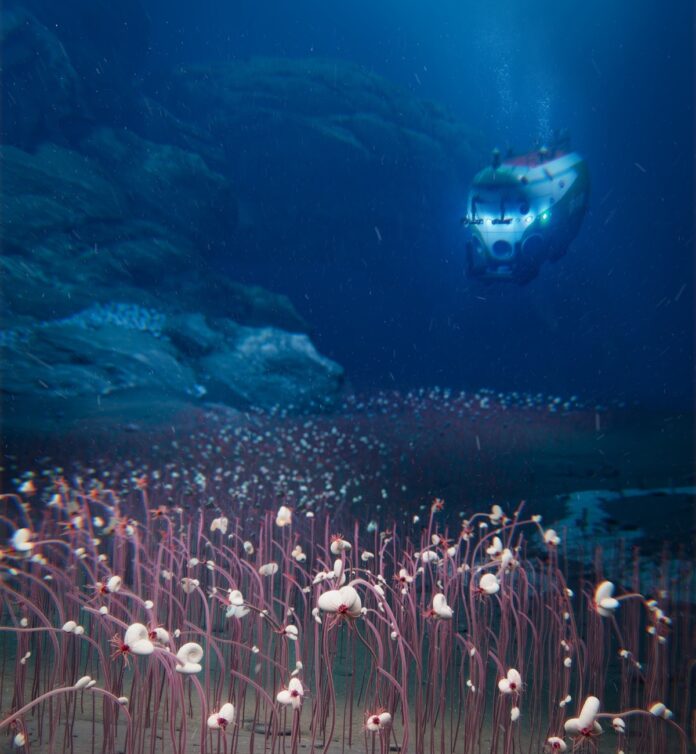"Unveiling the Abyss: Groundbreaking Discoveries in the Mariana Trench’s Deepest Ecosystem"
Groundbreaking Discovery in the Mariana Trench: New Life Forms Unveiled
Date: July 31, 2025
In a remarkable expedition deep within the Mariana Trench, researchers from the Institute of Deep-sea Science and Engineering, part of the Chinese Academy of Sciences, have uncovered a thriving ecosystem of mollusks and worms nearly six miles beneath the ocean’s surface. This discovery marks the identification of the deepest known colony of animals on Earth, challenging existing models of deep-ocean life and carbon cycling.
Expedition Overview
The research team utilized the manned submersible Fendouzhe, which conducted 23 dives into the western Pacific’s Mariana Trench last year. The submersible’s advanced technology allowed scientists to explore depths ranging from 3.6 to 5.92 miles, revealing extensive colonies of chemosynthetic organisms. The findings were published in the journal Nature, highlighting the significance of these discoveries in understanding life in extreme environments.
Ecosystem Characteristics
The newly discovered communities primarily consist of siboglinid Polychaeta and Bivalvia, spanning an astonishing distance of 1,553.4 miles. Unlike typical marine ecosystems that rely on sunlight for photosynthesis, these organisms thrive in complete darkness, deriving energy from chemicals such as hydrogen sulfide and methane that seep through the ocean floor. This process, known as chemosynthesis, allows them to flourish in conditions previously thought to be inhospitable.
Lead author Xiatong Peng noted, “Given geological similarities with other hadal trenches, such chemosynthesis-based communities might be more widespread than previously anticipated.” This suggests that the ocean’s depths may harbor even more undiscovered life forms.
Implications for Deep-Ocean Research
The findings challenge long-held beliefs about the limits of life in the ocean. The researchers observed vibrant communities of tubeworms, clams, and various invertebrates, indicating a rich biodiversity in these extreme environments. Co-author Mengran Du, a marine geochemist, emphasized the significance of their discovery: “What makes our discovery groundbreaking is not just its greater depth – it’s the astonishing abundance and diversity of chemosynthetic life we observed.”
The team also documented compelling evidence of microbial activity producing methane, with tubeworms clustering around microbial mats that resembled snow. This discovery adds a new layer to our understanding of deep-sea ecosystems and their role in global carbon cycling.
Environmental Concerns and Future Exploration
As countries debate the controversial issue of deep-sea mining for valuable minerals, these findings raise critical questions about the potential impact on fragile marine ecosystems. Ocean scientists warn that mining could devastate these newly discovered habitats, which represent some of the last wild zones on the planet. The International Seabed Authority has yet to establish regulations governing this industry, despite ongoing discussions.
Historically, the Mariana Trench has been a site of intrigue and exploration. The first successful descent was made in 1960, with only a handful of expeditions following, including a notable solo dive by filmmaker James Cameron in 2012. Cameron described the environment as “desolate” and “alien,” a sentiment echoed by researchers who continue to unveil the mysteries of the deep sea.
Conclusion
The discovery of these chemosynthetic communities in the Mariana Trench not only expands our understanding of life in extreme conditions but also underscores the importance of protecting these fragile ecosystems. As exploration continues, the potential for further discoveries remains vast, inviting scientists and environmentalists alike to advocate for the preservation of our oceans.
For more detailed insights into this groundbreaking research, refer to the full study published in Nature.
